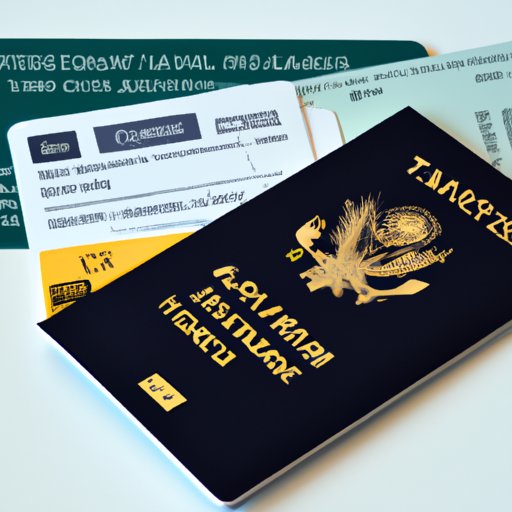
The Ultimate Guide to ID Requirements for Air Travel
Are you planning to take a flight soon? One thing that should be on top of your travel checklist is the right identification (ID) requirement for air travel. Having the right identification documents is crucial for both domestic and international flights.
In this article, we will walk you through everything you need to know about ID requirements for air travel. We will discuss the different types of ID documents needed for domestic and international flights, the TSA ID requirements, what to do if you lose your ID, navigating ID requirements for budget airlines, and the most common mistakes when bringing IDs to the airport.
The Complete Guide to IDs for Domestic and International Flights
For domestic travel, most airlines require a government-issued ID, such as a driver’s license, state ID, or a military ID. However, it’s best to check the specific airline’s ID requirements as some may request additional forms of ID that may include passport, birth certificate, or social security card. In addition to bringing valid ID, it’s essential to remember it should also be unexpired and matches the information displayed on the reservation.
For international travel, you’ll always require a passport, and some destinations may require a visa, that needs to be obtained ahead of time. Make sure to confirm with the embassy of the country you’re planning to visit for travel restrictions and visa requirements.
TSA ID Requirements: What You Need to Know Before You Go
According to TSA, a valid ID is required for air travel in the United States. A valid ID is an unexpired driver’s license or a U.S. passport, among other approved documents. Children under 18 aren’t required to show identification unless they’re traveling internationally.
If a passenger doesn’t have the required identification, they may still be allowed through security, but it’ll take a little longer. The TSA may allow you to proceed if you provide additional verification documents, like a temporary ID or an expired ID with a receipt proving you applied for a renewal.
However, it’s best to have the right ID before traveling, as this minimizes the time to get through TSA and makes the experience less stressful.
Flying Without ID: What Are Your Options?
When traveling without proper identification, it’s essential to find alternative ways to identify yourself. It’s crucial to reach the airport early and to communicate with TSA if you’re missing an essential ID. A passport is considered a universally accepted travel ID and can be used when other forms of ID are lost or stolen.
Suppose you don’t have a passport; TSA has a multilayered ID verification process that involves verifying your identity by asking questions and reviewing publicly available databases. TSA may also contact law enforcement if security is of concern.
Navigating ID Requirements for Budget Airline Travel
When flying with a budget airline, you may encounter different ID requirements or fees charged to use particular forms of IDs. Budget airlines tend to charge more for a seat, and because of this, they’ll seek out additional revenue streams where possible. Make sure to check the airline’s website for any additional fees before booking your ticket.
If you don’t have the form of ID required by the airline, you may have to pay additional fees or potentially lose your reservation altogether. To avoid this, check the airline’s rules before booking a ticket and make sure you have the proper form of ID.
10 Common Mistakes People Make When Bringing IDs to the Airport
Here are ten of the most common mistakes that people make when bringing ID to the airport:
1. Not checking that the ID is valid and unexpired.
2. Forgetting to bring the ID to the airport.
3. Using a counterfeit ID.
4. Failing to update an ID after a significant life event.
5. Using an ID that doesn’t match the reservation data.
6. Bringing unapproved IDs.
7. Not having enough official documents to prove identity.
8. Having an ID that is severely damaged.
9. Traveling without a passport.
10. Not checking specific airlines’ policies.
To avoid these mistakes, it’s essential to double-check the ID requirements for flights well ahead of time. Make sure always to check that your ID is valid, bring it along with other necessary documents needed for your trip and keep your ID in a secure and safe place while traveling.
Conclusion
Having the right form of identification is crucial for a seamless air travel experience. In this article, we’ve covered everything you need to know about ID requirements for air travel. Always research and check the specific airline and TSA ID requirements before traveling to avoid stress and delays. Remember, lost or misplaced ID doesn’t have to stop your travel plans; it’s always recommended to carry additional right forms of identification in case of an unforeseen situation.




